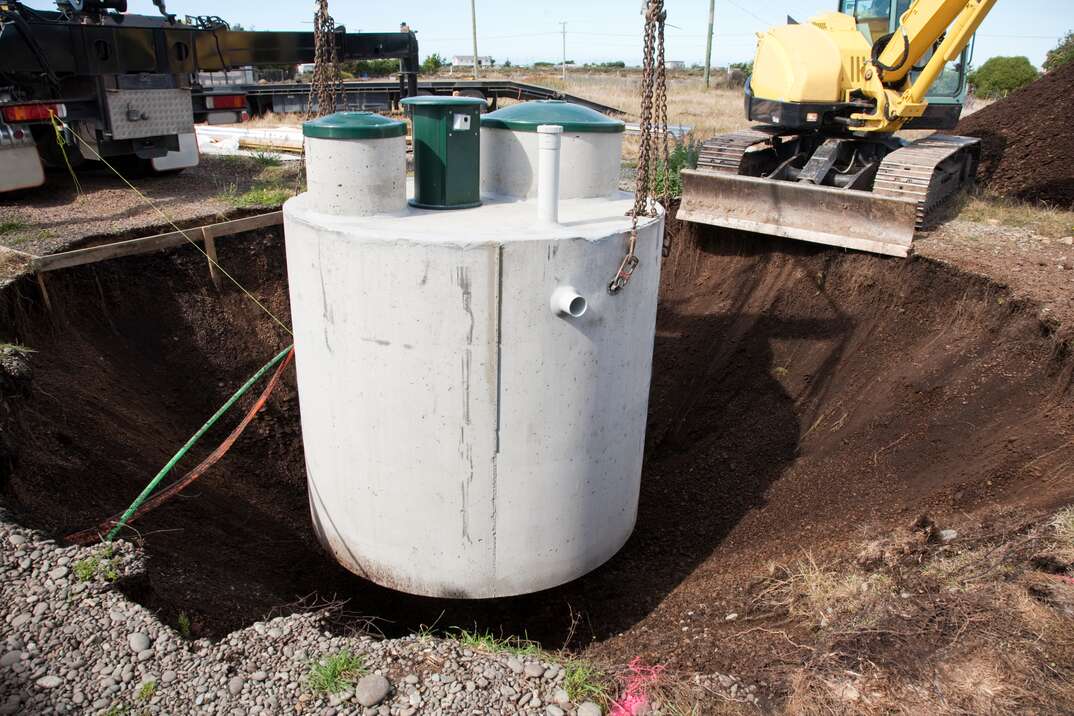- AppliancesElectriciansHVACLandscapingLocksmithPest ControlPlumbingRenovationRoofingT V RepairAll Home Improvement
- Car AccidentClass ActionCorporate LawCriminal DefenseDivorce LawEmployment LawFamily LawFinancial LawLegal AidMedical Injury LawyersMedical MalpracticeReal Estate LawWater Fire RestorationAll Legal
- InvestmentRetirementAll Finance
- Animal InsuranceAutoGeneral InsuranceHealth PolicyHome RentersAll Insurance
- DentalHealth SpecialistsAll Medical
- Animal CareVeterinaryAll Pets
- Auto GlassTowingAll Automotive
How Much Does It Cost to Install a Septic System?

Septic System Installation Costs at a Glance
- Total cost: $6,400, average; $3,100-$9,700, range
- Alternative systems: $6,000-$15,000
- Engineered system with leach field: $2,000-$15,000
- Removal of existing system: $5,500
- Landscaping leach field site: $1,200 to $4,500
- Permits and inspections: $400 and $2,500
- Labor cost: $160 per hour
One of the benefits of urban living is having access to municipal sewage waste systems. If you live a little further aware from a city center — or out in a rural area — you’ll typically have to install a septic system to handle the waste coming from your home.
A septic system generally consists of a tank buried in the yard to collect waste. Here are some things to consider when installing a new system or replacing an old one.
The cost of a new conventional septic system is typically between about $3,100 and $9,700, according BobVila.com. The national average price is about $6,400. A high-end system can run as much as $18,650.
Alternative septic systems that use a pump to help break down waste can cost between $6,000 and $15,000. An engineered system, where a special leach field has to be created, costs between $2,000 and $15,000. If you have to remove an old septic system, you can expect to pay up to an additional $5,500 to complete the project.
Factors that Affect the Cost
Different factors can raise or lower septic system costs. Household size is one. A three-bedroom home typically needs a 1,000-gallon tank. A one- to two-bedroom home generally needs a 750-gallon tank. The cost range is usually between $600 and $1,200 for an average home. The smaller the tank, the lower the cost.
The type of system you’re installing also plays a role in the cost.
- Anaerobic systems rely on “oxygen-adverse” bacteria to break down waste and cost $2,000 to $5,000.
- Aerobic systems use an air pump to aerate the tank and allow “oxygen-loving” bacteria to do the job. These systems cost $10,000 to $20,000.
- Mound septic systems are used when the soil isn't suitable to use as a drain field. An artificial leach field is created over the top of the soil. On average, a mound system costs about $15,000.
- Sand filter systems involve a boxed structure to hold sand. The effluence is then pumped into the box to filter it. Average cost runs between $6,000 and $10,000.
- Pressure distribution systems are used when the water table is within 2 feet of the leach field. A pump pushes the effluence to the top of the leach field to filter it. This can cost between $7,000 and $10,000 to install.
- Tank-type systems are common, and the type of tank affects the price. Concrete tanks cost between $2,350 to $6,750. Fiberglass runs between $1,600 and $2,000, and plastic costs $830 to $1,900. The cost of steel tanks varies widely; they aren’t typically considered cost-effective as they deteriorate much quicker than the other materials.
Additional factors include landscaping a leach field site, which costs $1,200 to $4,500. Permits and inspections may run you between $400 and $2,500. You’ll also have to pay for the labor, which costs about $160 per hour on average.
A well-maintained septic system can last 20 to 30 years. To maintain the system, you must not damage the leach field by having vehicles or other heavy items going over the top of it.
The heavier the use of the system, the quicker it will wear down. A full house will put a lot of strain on the system, which could lead to its early demise. You also need to limit the amount of grease, chemicals and food going into the tank, as these will shorten a system’s lifespan.
One other consideration is the material used to build the tank. Concrete tanks can last up to 40 years, while steel or plastic ones last 20 to 30 years.
Elocal Editorial Content is for educational and entertainment purposes only. Editorial Content should not be used as a substitute for advice from a licensed professional in your state reviewing your issue. Systems, equipment, issues and circumstances vary. Follow the manufacturer's safety precautions. The opinions, beliefs and viewpoints expressed by the eLocal Editorial Team and other third-party content providers do not necessarily reflect the opinions, beliefs and viewpoints of eLocal or its affiliate companies. Use of the Blog is subject to the
Website Terms and Conditions.The eLocal Editorial Team operates independently of eLocal USA's marketing and sales decisions.



